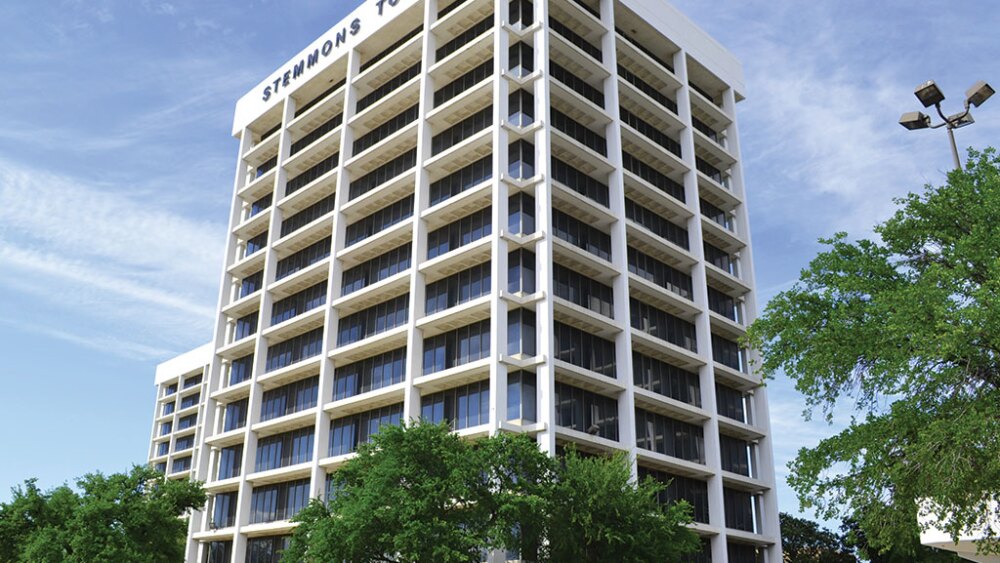Experts speak about the near-term prospects for converting office buildings into multifamily housing, best practices for evaluating conversion potential, innovative ways the public sector can support these projects, and other related trends.
What are the near-term prospects for converting office buildings into multifamily housing?
Mary Ludgin: A recent analysis by CoStar and CBRE found there were around 100 office conversion projects underway in major U.S. cities in 2023, up from an average of 40 annually from 2016 to 2022. About half are office-to-residential conversions, with another 20 percent [of conversions] being office to life sciences. These trends [are likely to] continue. Conversions alone won’t fully address our cities’ needs, of course. When I was in Dallas for the ULI Fall Meeting, I could see a number of converted office buildings from my hotel window, yet the downtown office vacancy rate remains very high. But conversions can help. New York’s 421-g tax incentive in the 1990s stimulated 90-plus buildings and more than 12,000 new residential units through adaptive reuse, and brought new residents and life to the streets. [Although] not a silver bullet, strategic conversions of obsolete offices can be part of refreshing our urban cores.
Chris Robbins: We will definitely see more office conversions over the coming years. A number of class B and C office buildings struggle with obsolescence, and if they aren’t converted or significantly upgraded to current standards, they may not have a bright future. There is a lot of discussion at a high level about office-to-residential conversions without necessarily a deep understanding of the actual process to rezone, repurpose, and redesign an office building for residential use. While it may sound relatively easy to convert vacant offices into multifamily buildings, it’s much more difficult in practice. To even consider a conversion, one needs to identify the right property in terms of floor plates, location, age, and, of course, price, et cetera. It’s like a complex Rubik’s Cube to determine if it’s structurally feasible to convert a building, and if the costs and fees make financial sense.
Geeti Silwal: We have to keep fine-tuning policies and regulations to create a more feasible environment for conversions. Public sector incentives for office-to-residential conversions, like tax rebates and reduced parking and affordable housing mandates, are helpful moves. It will take a few years to really see the impacts of these changes. San Francisco recently temporarily reduced the requirement for affordable housing in some approved but unbuilt residential buildings from 22 [percent] to 12 percent to aid their feasibility. But we have to be careful with these changes so that we don’t exclude a certain segment of the population in our communities or veer away from resilience commitments. Constant monitoring and calibration are needed to encourage housing production while ensuring long-term affordability and delivering on sustainability goals.
Karin Liljegren: The level of interest in converting office buildings into multifamily housing has grown exponentially. But the prospects depend on acquisition costs, interest rates, and incentives. There’s going to be [a] tipping point where conversions really take off, but acquisition costs and interest rates still need to be lower than they are now, and there need to be more incentives. That tipping point will arrive at different times, depending on the region, but once it comes, there will be a flurry of activity.
What are best practices for evaluating office buildings for conversion potential to housing?
Robbins: First and foremost, assess the market demand for whatever type of multifamily project an office building could be converted into, then work backwards from there. Evaluate if the building can be physically converted. That’s where one should lean on land use/zoning consultants, architects, and structural and MEP [mechanical, electrical, and plumbing] engineers, especially in seismic zones like California, where older buildings generally are not code compliant. Can the floor plates and the MEP systems be economically configured into unit layouts and sizes that meet the demand in the market?
Liljegren: One of the best practices is to have a design team that is highly experienced in adaptive use, because they know how to find opportunities in the challenges, and they understand the process. You have to start evaluating the building at a high level … to understand if the project can pencil out, and then you have to zoom in more as you obtain more information to dial in the costs. With new construction, you can do a sketch and know, per square foot, how much it’s going to cost. But with adaptive reuse, it’s not as straightforward, so you have to do it in stages.
Ludgin: Design firms like Gensler have done extensive research on factors to consider, like location, access to transit, the distance between the building core and the windows, and floor plate size. We also consider target rental rates. With high enough achievable rents, developers can justify even expensive conversions, like sinking a light well into a large–floor plate building, as we’ve seen in New York City. But generally, buildings with a shallower depth between the windows and core tend to be easier conversion projects.
Silwal: Proximity to transit is critical. Looking for opportunities for conversions near transit corridors, parks, and other amenities and services will provide a more livable environment for new residents. It is important to ensure [that] we are creating complete communities. We don’t want people living in buildings that are surrounded by empty office towers with no life on weekends or after business hours. Developing clusters of residential nodes that promote a sense of community and create a livable place is essential. Thinking holistically about the surrounding neighborhood offerings and enriching the experience for residents is key.
What are the primary challenges with these kinds of conversions?
Liljegren: The primary challenges are economic, such as acquisition costs, incentives, policy, and financing. Financial incentives from the public sector can help, but it takes a long time for cities, especially large ones, to get organized and approve policy reform. Small cities are more nimble. [A building’s] challenges, such as unforeseen conditions or regulatory requirements, can be mitigated if the team is experienced. From a design perspective, any building can work as housing if you are creative. Whether it is financially viable … is another issue.
Ludgin: Public subsidies are often needed for conversions to pencil out, and cities are facing budget challenges. Some mayors are focused more on neighborhoods than downtowns. But healthy cities need healthy downtowns. Zoning and building codes can also make it difficult to execute adaptive reuse projects, so cities should review regulations to see what’s truly necessary. For example, rules about bedrooms requiring windows—do those protect residents? For a six-bedroom student housing suite, if two bedrooms don’t have access to daylight, is that a problem? Finally, existing buildings bring uncertainties, [such as] the presence of asbestos. But the cost of converting an existing building can be 15 [percent] to 20 percent less than new construction, so developers may accept the risks.
Robbins: The challenges can be numerous and center [on] identifying assets that can be cost-effectively converted from an office use to multifamily. Considerations include floor plate size and layout, delivery of utilities to units, zoning and building code compliance, and ability to provide adequate parking and common amenities. One of the biggest hurdles is acquiring a property at a basis that pencils for conversion. There is currently a delta between the prices office building owners are willing to sell at and the basis conversion investors need to acquire an asset to make it a financially viable project. There are many costs involved: ADA access upgrades; seismic retrofits; mechanical, electrical, and plumbing upgrades; and adhering to recently passed mandates in certain jurisdictions—e.g., new building electrification mandates in New York City. There are tax implications, as well. Successful conversions require creative financing beyond
conventional construction loans, such as C-PACE [Commercial Property Assessed Clean Energy] financing, which can typically fund a significant amount of the hard and soft costs associated with a conversion.
How could the public sector best incentivize and ease the process of converting offices to housing?
Robbins: The public sector could consider providing tax incentives for purchasing vacant convertible office buildings, subsidies, and density bonuses, as well as low-cost or no-cost financing during the conversion, lease up, and stabilization process. Streamlining zoning and permitting through an expedited, “fast-track” approval process specifically for conversions would also incentivize projects.
Silwal: Office buildings that are not well suited for conversion could actively promote their ground floor spaces to contribute to the community life of the neighborhood and create a draw for potential residents. Public agencies can take on master leases for downtown ground-floor spaces in identified pockets to promote events and activities that bring a diverse user group to the neighborhood. They can help curate tenants [including] artists, nonprofits, and local, small businesses that bring foot traffic but aren’t necessarily revenue-drivers, taking that burden off commercial developers. That’s the most impactful move the public sector can make. More foot traffic will make the floors above more attractive to tenants. Programs like San Francisco’s Vacant to Vibrant facilitate partnerships between the city and building owners to allow pop-ups as interim uses.
Ludgin: For tax-exempt institutional investors, tax incentives may not help much, so incentives [such as] reduced property taxes could attract a broader range of investors. Speeding up entitlements is always valuable. Cities can also enhance an area’s appeal for conversions. For example, ULI’s LaSalle Street Technical Assistance Panel recommended ideas like introducing new public spaces via weekend street closures in the financial district to add open space and activity.
Liljegren: The best way for the public sector to incentivize office-to-housing conversions would be to provide direct financial assistance to developers, such as a certain dollar amount per square foot. However, few cities have the resources to do [so]. Other helpful incentives include tax incentives or removing city fees to lower project costs. Policy reform is also key to streamlining the process. The city of Los Angeles is poised to implement two significant adaptive use policies. The first would make adaptive reuse projects by-right, avoiding a lengthy entitlement process. This [policy] saves developers significant time and money. The second would allow for the addition of square footage to the existing building while keeping the project by-right, as long as it meets the building code.
What do you wish more people knew about office-to-residential conversions?
Liljegren: New financial incentives specifically for existing building conversions are emerging and can help fill the financing gap. For example, there are green financing options tailored to upgrading existing buildings. Affordable housing developers have been piecing together creative lending structures for a long time, drawing on a mix of secondary financing sources, tax incentives, and other programs. Developers converting office buildings can similarly tap into [numerous] funding sources to create the capital stack.
Silwal: When we were looking at downtown San Francisco for the ULI Advisory Services Panel, it became clear [that] there is an opportunity to better showcase the diversity of the city’s neighborhoods in the urban core. While the city’s neighborhoods are thriving, downtown has seen an exodus of businesses. To represent all that San Francisco has to offer, downtown needs to be more inclusive. I’m excited about creative ways to program downtown so communities can showcase what they are about, and people can experience the culture and community of the city’s diverse neighborhoods in an engaging way.











